
Publications are only as strong as the people who make them work. As part of this new chapter in IEEE Technology and Society Magazine (TSM), this is the first in a series of pieces to introduce the new associate editors who represent a powerhouse of knowledge on the social implications of technology and are leaders from across the many varied disciplines that the IEEE Society for the Social Implications of Technology (IEEE SSIT) encompasses. We hope the answers below highlight the ways in which the associate editors are both scholars and engaged citizens whose work aims to make positive change as it addresses (or transforms) harms related to social–technical relationships. Reading through the answers from the associate editors’ work and interests, what becomes clear is that seriously engaging with technology and society concepts leads to richer research projects and more meaningful ways in which to address technological and social problems.
It is easy to focus on technology as the driver of social problems, but it is more accurate and useful to realize that the problems being exacerbated by technology are not new or unique. Much of the current issue (and issues from the recent past) focus on artificial intelligence (AI), but the magazine has held these same discussions on any number of emerging technologies. In fact, these concerns about technology and society reach back to the origins of automation.
Our goal is to find ways to reach broader engineering and technology audiences with TSM as we share more of our collective work within these pages. More importantly, if you find some of the stories and research shared here particularly engaging or related to your own interest, would you consider reaching out to the Editor-in-Chief Ketra Schmitt or a member of the editorial board? We would love to discuss how your own work might be a good fit for the magazine, either as a commentary, feature article, thematic cluster, or special issue.
Heather Love is an assistant professor of English language and literature at the University of Waterloo, Waterloo, ON N2L 3G1, Canada. She is the editor-in-chief of the SSIT newsletter. Her book Cybernetic Aesthetics: Modernism’s Networks of Information and Data (Cambridge, U.K.: Cambridge Univ. Press, 2023) is a finalist for the 2023 British Society for Literature and Science book prize.
Elisabeth Gilmore is an associate professor in environmental engineering at Carleton University, Ottawa, ON K1S 5B6, Canada. She is also an affiliated researcher at the Peace Research Institute Oslo (PRIO). She is as an author of the Summary for Policymakers for Working Group II in the 6th Assessment of the Intergovernmental Panel on Climate Change (IPCC) and a lead author in the 7th UN Global Environmental Outlook (GEO-7).
Neha Chugh was appointed as the Law Foundation of Ontario’s representative on the Board of Governors of the Law Commission of Ontario, was elected as a Bencher of the Law Society of Ontario in 2023 and serves as the prosecutor in the Akwesasne Court. She started Chugh Law Professional Corporation, Cornwall, ON K6J 1B9, Canada. Chugh is a PhD in social and cultural analysis at Concordia University, Montreal, QC H3G 1M8, Canada.
Michael Guckert is a professor of applied computer science with the Faculty of Mathematics, Natural Science and Data Processing, Technische Hochshule Mittelhessen, 35390 Gießen, Germany, and a board member of The Hessian Centre for Artificial Intelligence hessian. AI, 64289 Darmstadt, Germany. His research interests are knowledge-based systems, multiagent systems, and applications of artificial intelligence in industry and medicine. He has a focus on reliable and explainable AI.
Royce Francis is an associate professor with the Department of Engineering Management and Systems Engineering, George Washington University, Washington, DC 20052 USA. His overall research vision is to conduct research, teaching, and service that facilitates sustainable habitation of the built environment. He served as the Stephen Joel Trachtenberg (SJT) Scholars Faculty Mentor from 2017 to 2023 and is currently serving as the GWU Clark Scholars Program Faculty Director.
Antonio Bucchiarone is a senior researcher in the Motivational Digital Systems (MoDiS) research unit of the Bruno Kessler Foundation (FBK), 38123 Trento, Italy. He is actively involved in several national and European R&D projects in the field of adaptive systems, intelligent mobility, and education. He is currently a member of the Erasmus+ project ENCORE and a Senior Memberof IEEE.
If you are interested in learning more about Ketra, read her first editorial piece [A1].
What Was Your Path Toward SSIT/Technology and Society Research?
Heather Love: My PhD is in English literature, and I was working on a dissertation chapter about the modernist poet Ezra Pound and the ways that his poems incorporate feedback loops—I was drawing on cybernetician Norbert Wiener’s work to make the argument, and I heard about an SSIT-sponsored conference on the 21st-century legacy of Norbert Wiener. I applied to present and had the pleasure of meeting a wonderful community of folks who were interested in interdisciplinary approaches to technology and societal issues. I later ended up in a position where much of my teaching responsibilities focus on communication courses for STEM students; this work, along with some research partnerships that have bridged humanities and engineering disciplines, has allowed me to continue pursuing those tech–society–ethics topics in a variety of venues.
Elisabeth Gilmore: My first degree is in chemical and environmental engineering, where I became concerned that a substantial part of environmental engineering involves moderating the damages caused by societal patterns of production and consumption. As a result, I pursued a PhD in public policy where I gained a broader perspective on the bidirectional relationships between society and technology. Most importantly, this lens opened a wider range of opportunities for aligning technology with a more sustainable and just future.
How Does Your Work Address the Social–Technical Relationship?
Neha Chugh: My work as a lawyer strays from the technical and tries to focus on the individual. As more technologies infiltrate our justice system, risk assessment tools, GPS trackers, and body cams, being a few examples, we get excited as lawyers. But our clients are at the center of the fray. In my academic work and my legal arguments, I like to sharpen my understanding of the human cost of technology in our communities. Who is being affected? At what cost and whose expense are we prioritizing efficiency models?
Royce Francis: My colleague, Prof. Marie Paretti, served as a mentor on my first project in this space and she helped me to think deeply about theories of language and epistemology, and how those related to observational research methods that could help design inquiry into the ways engineers work together. Our work shows that there is no meaningful divide between social and technical because every technical judgment is accomplished through language and social interaction. Therefore, the social processes in which those interactions are situated—even if they are much more broadly cultural—have profound impacts on the shaping of technical artifacts through the judgments that emerge from teamwork processes.
Love: I look at how cultural production (literature, media, etc.) offers a window into broader sociotechnical systems—literary form often mirrors, draws from, or critiques those aspects of the world, offering imaginative, creative, sometimes speculative ways of defamiliarizing and reconceptualizing them. I also work with first-year engineering students, and while my classes emphasize concrete communication skills, I invite students to practice those skills through projects that engage with sociotechnical and ethical topics.
Do You Work With Any Civil Society Groups (or Other Engagement) and How Does That Affect Your Work?
Antonio Bucchiarone: In our research unit, we not only collaborate with civil society groups, but also actively involve real users in our projects. We conduct experiments and gather real-world data to implement and test gamified solutions in domains such as sustainable mobility and education. This hands-on approach enables us to work closely with citizens, educators, and students, conducting experiments that provide valuable insights and feedback. Our research goes beyond theoretical frameworks, incorporating real-world scenarios to ensure the practical effectiveness and impact of our solutions.
Francis: For the last two summers, I have been the lead instructor for an Environmental Justice Internship hosted by STEMcx, an organization here in Baltimore, MD, USA, where I live. STEMcx wants to increase the number of Black science, engineering, medicine, and technology professionals because there are so few of us in those fields here in the U.S. In the STEMcx internship, we have been using low-cost air pollution sensors that measure particulate matter (PM2.5) concentrations to study air pollution at locations the students choose. Thinking about the ways that science, engineering, technology, and society intersect provides excellent intellectual scaffolding for interacting with the interns as they design their projects, collect data, interpret their work, and think about their significance. It also allows me to think deeply about my role in introducing them to this important field.
I will close this civil society discussion with a bit of hard truth that Heather Love shared—many of us, especially those with young children, especially women, do not have the time for the kind of engagement we have read about above.
Love: Between teaching, research, parenting, SSIT projects, and life logistics, I do not have a ton of additional time! I volunteer as a hockey coach on my daughter’s team and as a literacy coach in the local school system; although these roles are not too closely related to the more academic aspects of my technology and society work, they definitely keep me connected to the kids and the broader community our work will ideally serve in beneficial ways.
And yet, Heather’s leadership and vision are what brought me to SSIT. I think SSIT is the civil society organization that she engages with. For me, that is pretty significant.
What Book or Movie Would You Recommend to TSM Readers?
Michael Guckert: Rebel@Work1 tells the story of Joseph Weizenbaum, the role model for a critical computer scientist.
Bucchiarone: Dune by Frank Herbert to read and The Matrix to watch.
Francis: Every environmental scientist/engineer or systems thinker MUST read Silent Spring by Rachel Carson, preferably multiple times. If you are not into books, try Anatomy of an AI by Kate Crawford and Vladan Joler < anatomyof.ai> . I had the privilege to see this exhibit in NYC’s Museum of Modern Art, and the essay accompanying it is awesome.
Chugh: Brother by David Chariandy. It is a short read, and I have read it many times. It is about brothers raised by their mother in Scarborough, Ontario. It is about poverty. It is about systemic racism in policing. It is about love and familial loss. It is the reason I am a criminal defense lawyer, researcher, and writer. Understanding systemic issues at an individual level is my passion, and this book ignites every reason why I am a lawyer and writer.
Ketra Schmitt: Of course, I cannot resist putting in a plug for a few of my favorites… Kim Stanley Robison is enormously influential to me in terms of envisioning possible futures—my favorite of his is New York 2140. I am also a big fan of Octavia Butler, a Black lesbian author whose work I discovered later than I should have! Check out Xenogenesis (now Lillith’s Brood). Finally, Naomi Kritzer’s short story “Cat Pictures Please,2 ” a story of an AI that wants to be helpful and struggles with figuring out just how to achieve that. A pretty familiar story for most of us thinking beings, no matter our hardware.
What is the Future In This Space?
Guckert: Ideally, I would love to see the magazine embrace its cross-disciplinary identity even more as it moves into the future. It would be wonderful for it to become a site not only for established IEEE audiences to get a window into the broader work of social scientific and humanistic ideas, but also for audiences from those fields to encounter and have a chance to engage with the IEEE and broader STEM community.
Bucchiarone: The future in the intersection of technology and society lies in ensuring a well-balanced representation of both aspects. Systems where humans interact with technology should prioritize the integration of technology and societal values. It is crucial to emphasize engagement and motivation, using innovative tools to drive positive change in the world. Sustainability should be a core focus, incorporating motivational elements to influence behavioral change gradually. Adopting a gamified approach with a serious purpose can transform the experience of societal interactions, making it akin to a cooperative game where collaboration is key. This approach aims to create a world that is not only technologically advanced, but also sustainable, considering the well-being of our current and future generations.
Gilmore: Right now, I am especially interested in how AI can help us identify promising new innovations to address climate change, but also has the potential to introduce new risks. SSIT scholarship will be especially important for revealing the complex societal and ethical dimensions around AI and other emerging technologies and ensuring that we foreground equity, justice, and fairness.
Appendix: Related Articles
To read the full version of this article, click HERE.





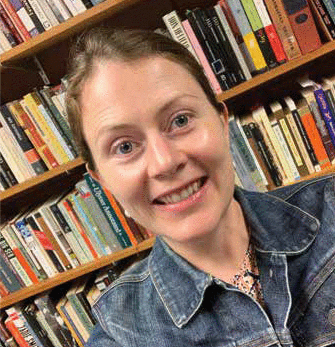
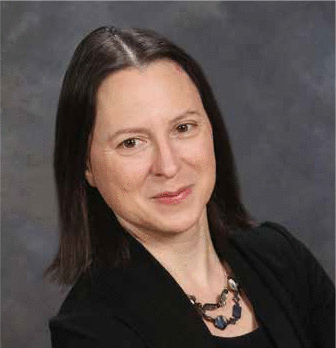
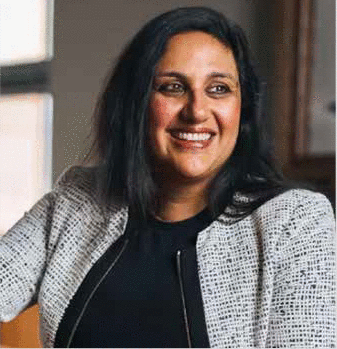
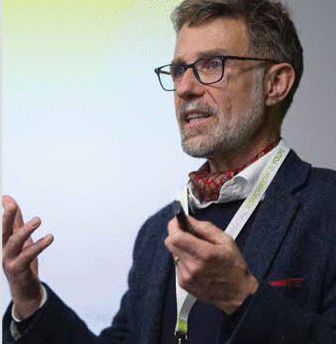
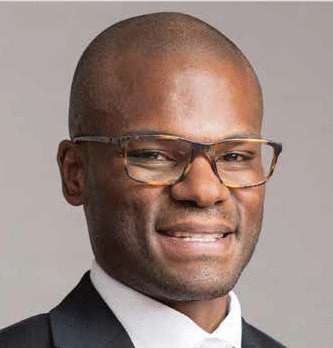
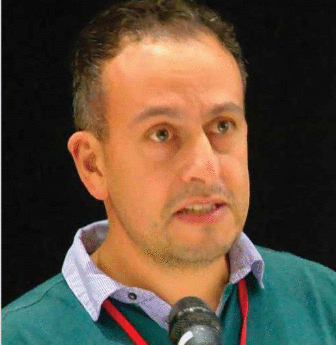

 JOIN SSIT
JOIN SSIT